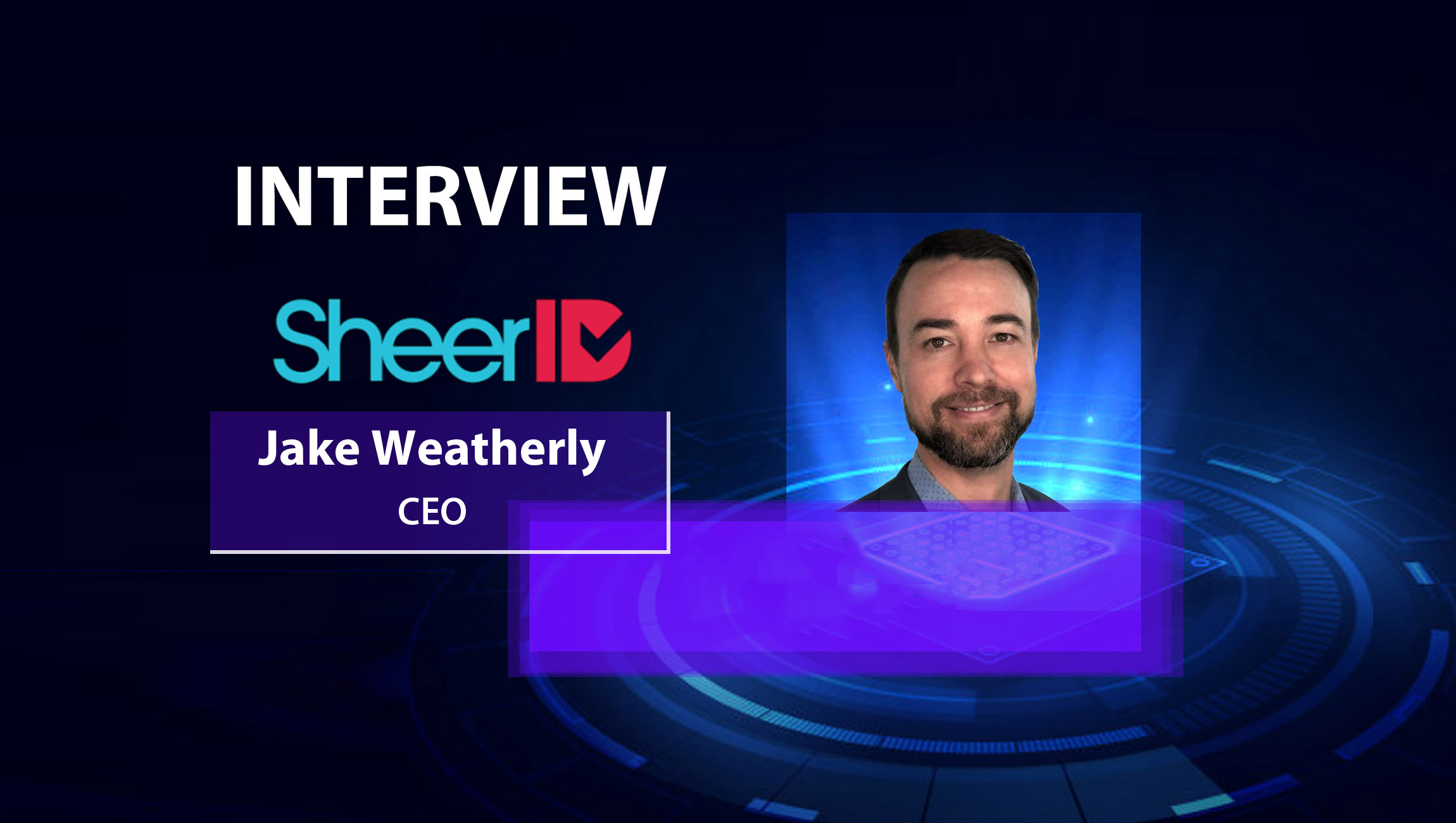Personalization has become a key driver for marketing leaders, across industries today, even more so in today’s largely remote selling and digital marketing environment; Jake Weatherly, CEO at SheerID dives into the growing use and benefits of Identity Marketing in this QnA:
______
Jake, we’d love to hear about the SheerID platform…and how companies/teams use the platform to improve customer acquisition processes?
Let me start with the problem we solve: simply put, getting the attention of consumers has never been harder. What we offer is “Identity Marketing,” a new type of personalization that helps marketers engage and verify people who belong to consumer tribes such as medical professionals, essential workers, military service members, students, and teachers, to name a few.
These consumer tribes share important parts of their identity, such as occupation, life stage, and values. They are also socially connected and often share information with one another, including special product offers, services, and unique experiences that are exclusively provided by brands to the group. This has the dual benefit of boosting marketing reach while decreasing customer acquisition costs, often producing ROAS (return on ad spend) results of 25 to 1 or higher.
Marketing Technology News: MarTech Interview with Eric Theobald, SVP of Products and Engineering at CareerBuilder
For instance, Lowe’s uses our platform to acquire new military customers. Lowe’s recognized early on that active military and vets align perfectly with their brand as many of these folks are do-it-yourselfers. As a result, Lowe’s had been offering a military discount for years. However, the company had struggled to accurately verify that everyone who applied for the special military program was indeed a service member. To cut down on fraud and design an excellent customer experience, Lowe’s turned to SheerID. Now, when someone tries to redeem a Lowe’s military discount, our technology platform instantly checks the person’s credentials against our partner databases, including those from the Department of Defense.
Our verification technology works the same way for other tribes. For instance, Spotify uses SheerID to protect its student program globally. We digitally verify student enrollment in real-time with the office of the registrar for every college and university in the United States and a growing number abroad. So, when someone applies for a Spotify student discount, SheerID instantly checks if they are eligible.
Roughly 30% to 35% of the requests that our system processes are from people pretending to be part of a consumer tribe. In total, we save our customers several billion dollars a year by eliminating fraud.
Tell us more about SheerID’s recent financial services solution?
This is something we are very excited about. There are three ways in which we help banks and other organizations within the financial services sector.
The first use case is geared towards helping companies acquire new customers. For instance, a bank can create a gated offer for an “exclusive” credit card for students, teachers, or members of the military. Or, they might offer one or more of these groups a preferred rate on a loan. SheerID handles the verification, ensuring that only eligible consumers can apply for the offer.
We think there is a particularly large opportunity to deliver real value to college students. We recently conducted a survey of young people and learned that 92% of students identify with being in college more strongly than they identify with their religion, family role, nationality or cultural background. What that tells us is that when you reward a person for being a student, that offer is likely to resonate.
Our platform can also help with decision support when considering an applicant for a personal loan. Today, as a financial institution, there is no fast and easy way to verify the employment status of many thin-file and credit-invisible applicants, such as part-time workers or people with multiple jobs. Conversely, we are able to identify the employment status of these people because, through a number of unique partnerships, we have access to the most recent employment data for 51M employers in the United States.
The third use case concerns the topic of regulatory compliance. Banks can use the SheerID platform to quickly verify the military status of applicants to ensure they are in compliance with SCRA and MLA regulations. Our solution has the added benefit of helping financial institutions identify applicants in order to meet AML regulations.
In what ways do you feel financial institutions and banks today need to improve their access to data and identity solutions for customer verification?
The lifeblood of all customer acquisition and retention programs is data. Unfortunately, financial institutions are challenged to gather data on the growing number of thin-file and “no-file” customers.
Credit bureaus struggle to identify the employment status of these people. We think this is a huge, missed opportunity given the vast and growing number of viable customer prospects who don’t hold traditional 9-to-5 jobs. Consider that the term “gig economy” did not even exist a few years ago. So, the challenge banks and financial institutions face is being able to identify the millions of people – particularly young people – who are currently off their radar.
Another important challenge being faced are the growing privacy concerns among consumers and policy makers. According to a recent Forrester Consulting survey, 80% of marketers within the financial services sector said that new privacy regulations are impacting the results of their personalization strategies, programs, tactics, and campaigns.
To address this issue, marketers in financial services – and across all industries – are beginning to rely on zero party and well-vetted, verified “consent-based” first party data. In many cases marketers are asking customers for their data in return for providing them a with a compelling benefit. Identity Marketing offers many ways of doing so. For example, when a student shares personal information in order to redeem a special offer, she is voluntarily providing the bank with information about herself. When individuals can say “I want you to know this about me, please check, because I am excited about what is on the other side,” the real magic happens.
We believe that the future of digital marketing will be one based on what one might call “invited personalization,” in which the consumer raises their hand and knowingly opts into an offer they want. This approach differs significantly from traditional forms of personalization where the marketer secretly tracks the prospect online, tries to add data and attributes without consent, and targets individuals based on compiled information which could accurately be referred to as “surveillance-based” personalization.
In a largely digital world, where banks and other service providers are still tightening several aspects of the customer services journey and even customer onboarding requirements, how do you feel identity verification solutions can improve the experience for both parties to create a win-win situation?
When it comes to verifying eligibility in milliseconds, while accuracy is critical, speed is also a significant factor. We are now living in an instant-gratification world where people expect to get verified for an offer in a matter of seconds in the same way that they expect to receive a product from Amazon with same-day delivery. Gone are the days when customers were ok with waiting hours, days, or even weeks to be approved for a loan.
Marketing Technology News: Email Marketing vs Social Media Marketing: Which One’s Best for You?
This is why companies that had verified consumers manually are now turning to digital verification platforms. Digital verification not only reduces frustration and friction, but it also allows companies to verify more consumers in a given period of time. It is for these reasons that the banks and financial institutions that can respond to this “need for speed” are the ones that are shining as the most competitive in the marketplace.
Additionally, once I confirm that someone is a member of a particular consumer tribe, I know what and how to communicate with that person. For instance, if you have verified that you are a student, I will likely provide you with offers that vary from those I would provide to a military vet. And, the messaging in my communication to you will also be different. Put another way, verification is a necessary ingredient to personalization.
As SaaS solutions evolve to present better capabilities to financial providers; how do you see the future of fintech services shaping up?
Never has there been a truer phrase than “meet your customers where they are.” And, right now, that place is online. In the years leading up to the pandemic we began to see a move by banks to make it easier for their customers to bank online. And, while those efforts by banks to become truly omnichannel obviously accelerated dramatically over the past 12 months, I don’t think there is any looking back. Banks should understand that, once the pandemic is over, many who started banking online during the pandemic will continue to do so.
More generally, I think we will continue to see banks adopt technologies that allow them to serve customers through a variety of channels. This means not only offering more services to customers digitally but also continuing to build out the branchless banking infrastructure that will allow the best institutions to do so. It is this massive shift that presents myriad opportunities for leveraging SaaS providers as accelerators.
A few thoughts on some of the most innovative B2B finance solutions you’ve seen in the market changing the game for users over the recent years?
The areas that I find particularly interesting are digital-only banks, pseudo-carries in insurance, and mobile-first customer experience platforms. Digital transformation has clearly been accelerating, making a stronger case for branchless banking. Other interesting areas to me are ewallets and payment gateways. Removing the friction in payment and money transfer is incredibly exciting for the future of frictionless commerce. And lastly, verification technology like ours. Maintaining consumer trust and authenticity in a digital world is getting harder and technology solutions need to keep pace with the latest innovations focused on preventing fraud.
We’d love to hear about SheerID’s future plans for the rest of 2021?
Expanding into financial services is one of our key initiatives this year. We already have several projects underway with large banks that will change the landscape during the year ahead and far beyond.
We are expanding our presence and focus in Europe. We recently announced expansion in 13 European countries with several consumer tribes. We believe the European market is hungry to see the benefits brands in the US enjoy with Identity Marketing.
Before we wrap up, a few last thoughts you’d like to share with tech innovators and leaders?
I cannot emphasize enough how important it will be to embrace the digital experience that is already upon us and beyond.
Consumers are experiencing the massive shifts that digital transformation has provided in other sectors like retail, entertainment, media, travel, and communications. The same phenomenon is clearly happening in the financial services industry. Consumers expects a digital service level of excellence, and they will enthusiastically reward financial institutions that give them control of their banking experience, with the expertise to help them manage their money, get started, and grow wealth.
At the end of the day, everyone wants relevant marketing offers and SheerID can deliver on that desire through our verification of more than 2.5 billion consumers worldwide.
Marketing Technology News: How to Start Creating the Change Advertising Needs
As the CEO of SheerID, Inc., Jake has advanced the company to its position as the proven leader and pioneer of identity marketing, a new form of personalization to help brands connect with consumer tribes like students, teachers, and the military. He spends much of his time and energy on the strategic direction, growth, and development of SheerID.












